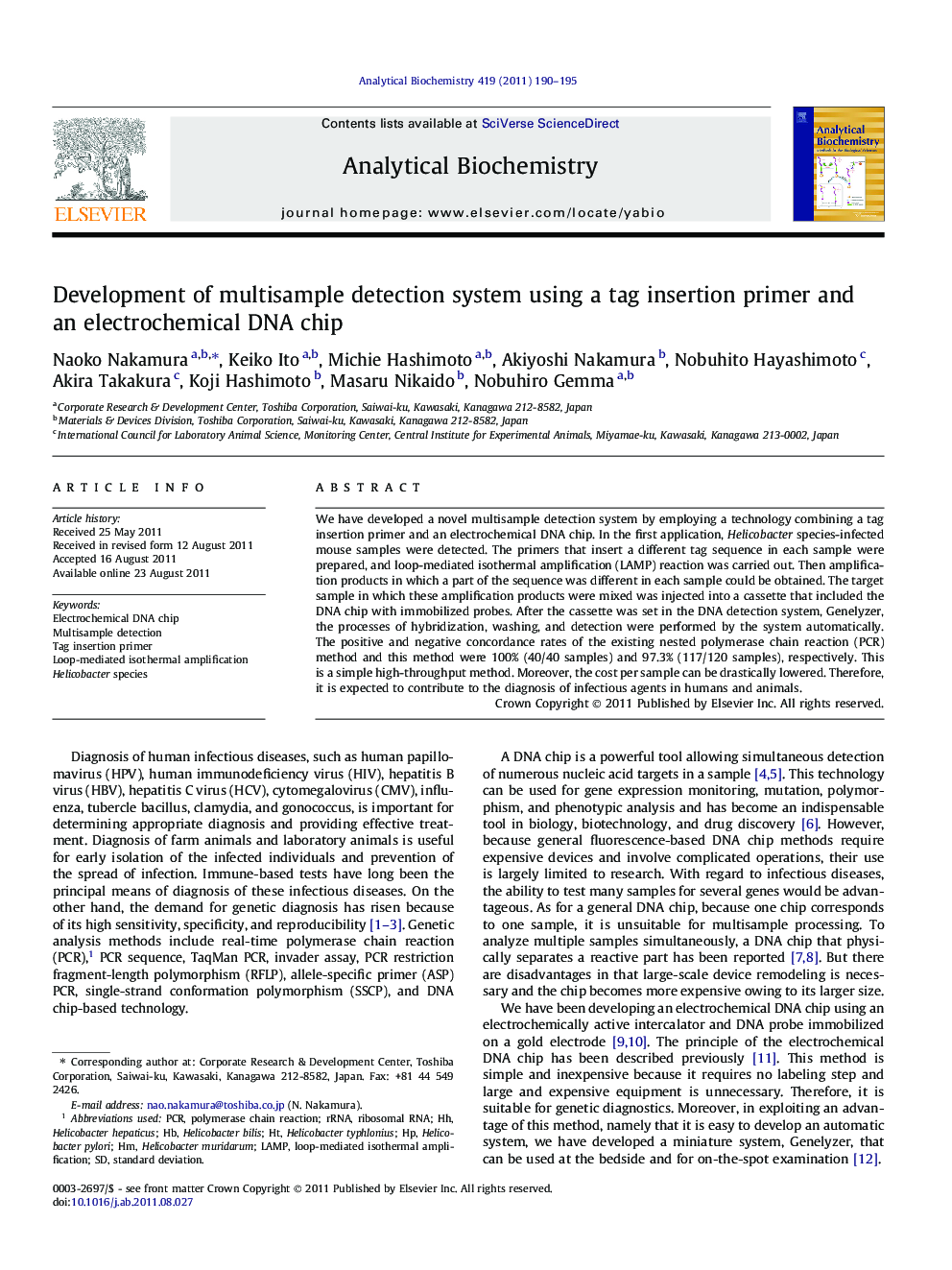| Article ID | Journal | Published Year | Pages | File Type |
|---|---|---|---|---|
| 1173345 | Analytical Biochemistry | 2011 | 6 Pages |
We have developed a novel multisample detection system by employing a technology combining a tag insertion primer and an electrochemical DNA chip. In the first application, Helicobacter species-infected mouse samples were detected. The primers that insert a different tag sequence in each sample were prepared, and loop-mediated isothermal amplification (LAMP) reaction was carried out. Then amplification products in which a part of the sequence was different in each sample could be obtained. The target sample in which these amplification products were mixed was injected into a cassette that included the DNA chip with immobilized probes. After the cassette was set in the DNA detection system, Genelyzer, the processes of hybridization, washing, and detection were performed by the system automatically. The positive and negative concordance rates of the existing nested polymerase chain reaction (PCR) method and this method were 100% (40/40 samples) and 97.3% (117/120 samples), respectively. This is a simple high-throughput method. Moreover, the cost per sample can be drastically lowered. Therefore, it is expected to contribute to the diagnosis of infectious agents in humans and animals.
